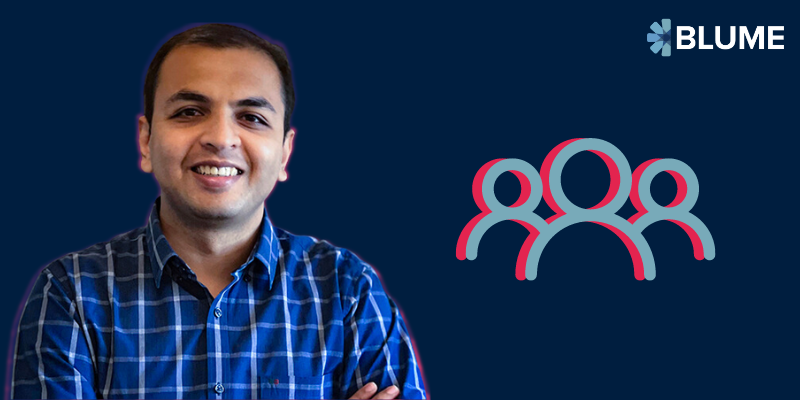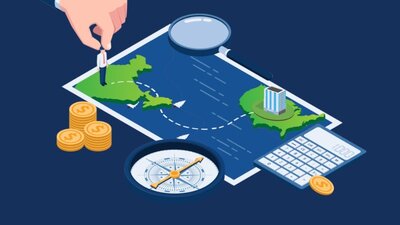Srikrishnan Ganesan, also known as Sri, is a seasoned founder and a staunch advocate of the power of community in helping fellow founders through their business journeys. He is currently the co-founder and CEO of Rocketlane, a SaaS tool that streamlines onboarding projects, shortens time-to-value and enhances customer engagement. Sri also runs a community for customer onboarding and success professionals called Preflight, with 2500+ members.
Sri joined Blume SaaS founders for a chat and answered a volley of questions on all things community. I am sharing with you his views, insights, and experiences. I hope you find something useful here as you build your communities.
Finding your community sweet spot
‘There’s a community for that’ is the new ‘there’s an app for that.’ With existing communities seemingly covering all business functions and new ones popping up every month, Sri suggests checking two things before starting a community.
First, check if someone else is doing it. If there’s no one doing it, then it’s a sweet spot that increases the odds of a successful community. Starting another community in a crowded space should be avoided.
Sri: “Unlike, let's say, sales or marketing tools where there are lots of communities that already exist for sales teams and marketing teams, there was no place that people can go to learn and hang out and share notes for implementation and onboarding professionals.”
Second, if you are in a crowded space, you should niche down to find the sweet spot with enough differentiation and critical mass.
Sri: “Customer success had a lot of communities. And none that focus only on the aspect of onboarding and implementation. That is one reason we felt there is a clear gap in sharing knowledge.”
How to find early community members
Finding the first members of a new community is tough. Here are a few things Sri suggests for you to experiment with.
Launch community before the product
If your product is not ready, but you have started the customer discovery process and built relationships with potential buyers, you can launch your community even before you launch the product. Your prospects get a place to exchange notes on their struggles and victories, making you look good.
Sri: “The way the community started was we had five companies like DarwinBox, Chargebee, and a couple of others, with whom we were talking regularly about how they could level up, what initiatives they were doing, how they were running their implementations, what could we learn from them. We created a Slack group where we would share things with them about what we were building and get their feedback, saying, Hey, here's how we're thinking about this problem.”
Use webinars at the top of the funnel to draw in new members
Webinars are one of the most popular ways to attract new members. You don’t have to look far for a guest; they could be a fellow founder with deep insights and experience with the pain point your community is solving. Rockmetric’s Nimesh Mehta was the guest in Preflight’s first webinar. He had just undergone a journey of reducing their implementation time 10x.
Sri: “And I asked him, are you open to doing this conversation in front of an audience? He said, Yes. I posted it on an enterprise SaaS WhatsApp group where there are a lot of enterprise SaaS founders. And I asked, Hey, are you interested in this session? And a lot of people said, Yes, I want to attend, or Yes, I want my implementation manager to attend,
“At the end of the 1-hour mark, people had more questions to ask. And I said, Hey, I have a Slack group. I'll just add you all there. You can continue the conversation there. So that's how the community Preflight started.”
Promote the webinar through your social media, WhatsApp groups, or other communities where you are active. Ensure you add incentives, such as recordings of past events, for the webinar attendees.
Sri: “We would again post on LinkedIn saying, Hey, if you want to attend this session, sign up for the community. Only people in the community will get to access this session and its recordings.”
Seek forgiveness, not approval
In the early days, feel free to hack your way around to get more webinar attendees, even if you sometimes mess it up and have to apologize.
Sri: “The way we also did this was if you attended session 1, I’d send you the calendar invite for session 2, session 3, session 4. I won't even ask your permission every time to see if you want to join. The idea was it was okay. If someone doesn't want to join, they will decline.”
Add a personal touch and automate communication to scale outreach
Mails about the community events should go from the founder’s inbox and not no-reply@companyname.com. Also, automate your outbound outreach on LinkedIn and/or Twitter so that you surface your community to the right set of people.
Sri: “I also started doing some outbound for the community instead of our product because the product wasn't ready yet. So essentially reaching out to people saying we have people from companies like Gainsight, Chargebee, and Zendesk in this community, and they should join too. And this was an automated message I was sending messages to 500 people a week on LinkedIn at one point in time.”
How to solve the cold-start problem of community engagement
The only thing harder than getting early community members is kickstarting the community engagement flywheel. All communities struggle with the cold start problem - when you have a handful of early members who are well-intentioned but don’t have enough time to post content or engage in conversations at a high frequency to keep the community moving.
One of Sri’s crucial pieces of advice at this stage is: be shameless! You should expect to be the only one posting repeatedly in the forum with limited organic participation from members for the first few months. You’ll post questions in the forum, tag people in those questions to answer, but they may not, and then you will answer your own questions. This will look like a failure for a while, and only after that will it take off.
Here are a few actionable experiments from Sri to get early momentum in your community.
Build a regular content cadence
Create a fixed posting schedule in the community, even if the response is lukewarm. For instance, set up a ‘Question of the Week’ and follow through.
Sri: “What we did was come up with a few questions to post in the community every week so that you have a question of the week and you're seeding some thoughts. If no one answered the question, I‘d tag people I knew. It was a win. People got to share their knowledge, be the day's hero, and learn from each other. Other people got to see and learn.”
Keep it real
Keep the community’s content close to the metal, and don’t make it feel overly polished or orchestrated, which may turn off organic engagement.
Sri: “Don’t make it feel like marketing. Make it feel like a close-knit community and like everyone’s sharing things and learning. I just used to put meeting notes on a Notion document. At the end, there would be a call to action asking the reader to join the community if they want more content.”
Make early community members feel special
Reward early community members through a gamified system such as social badges, leaderboards, or points to make them feel special. You can also provide formal designations to them that reflect their responsibilities within the community.
Sri: “I think any sort of social badge helps where you'll find people posting on their LinkedIn saying they are a founding member of a community or mentor of a community and so on. So that's like a badge you give them that they can display externally and get recognized.”
“Other than that, maybe running contests is one way to engage a community. Anything gamification, right?”
“You should recognize that the best idea will not always come from you. We had members volunteer to become the representative of their city cohort. And they took up ownership to keep their respective city members engaged.”
Even after all of this, getting the community flywheel moving may take 6 to 9 months or more. For instance, it took Preflight 3 to 4 months before organic community engagement started.
If you are enjoying reading this article, join our free mailing list to get this and all our other content directly in your inbox every month.
Importance of the founder’s time with the community
Growing a community will take a significant chunk of a founder’s time, even if you have a full-time community manager. A founder cannot run their community as a side project, or it’s doomed to fail.
Sri: “Every successful community has had the founder make their presence felt, indicating that the leadership is involved.”
In fact, building a community in parallel to your start-up is like running two companies and is not for the faint of heart. You should not take the decision to launch a community lightly.
Sri: “This is like a product as well. It's taking its own iterations. It's evolving. So, as much involvement is needed with the community as it does to build your business. Treat this as a second business that you're investing in.”
Here’s how Sri describes his time commitment with Preflight.
Sri: “Every month, I probably spend 3-4 hours on Preflight. And then outside of those few hours, there's, of course, the in-person events that we go to. I'm involved for half a day for each event and maybe planning before that, inviting people.”
How to scale your community
Once your community takes off, you’ll need to solve two problems: (a) how to keep the existing members engaged and (b) how to add new members. Sri suggests that there’s no fixed formula and you should experiment iteratively.
When you push community engagement, you should be aware that communities have a 97/3 rule - 97% of people just watch and consume content, and 3% of the members actively post. You can move the needle a bit on active members from 3% to, say, 5-6%, but don’t set yourself up for failure by assuming all community members will actively participate/create content. Instead, find ways to help the passive community members learn and absorb more content so that they enjoy coming back to the forum.
Don’t recruit community managers; recruit community success managers
In the early days of a community, you may have an intern or a part-time team member take care of the community, but at scale, you should have one person whose day job is to grow the community.
Sri: “And one of the things I've told our community manager is, don't be a community manager, be a community success manager. In the sense that you are there for each person in the community. You're trying to create success for them. Community success managers chat with members and understand their motivation. They're asking, ‘How can I be more valuable to you? How can this community be more valuable to you?”
Provide an exceptional onboarding experience to new members
Similar to SaaS, onboarding is crucial to a new member’s experience. When someone joins your community, it’s important to engage with them immediately and understand their aspirations behind joining the community.
Sri: “We have automation to ensure people engage. When someone joins the community, they get a Slack message. We use a tool called Threado for that, and the idea is to capture some information on that person, how they can contribute, what they're interested in. This keeps things engaging for anyone new who joins.”
A new member will not know what they should first read or the conversations where they can add value. Use the information collected from them at the time of onboarding to help them navigate to the right parts of the community. Also, add a human touch to the onboarding experience (but don’t be pushy!).
Sri: “We send them two DMs. One goes from me, another from the community manager, for different reasons. The one that goes from me tells them what they can do to derive more value from Preflight, asks them to fill a survey to help us tag them in the right conversations, create the right content for them, highlight them.”
“And from our community manager, there's a different message, which focuses on letting them know the channels they should explore, where they can introduce themselves, etc. So it's more immediate action for them to go and check out some things and say some things. And she also drops a message after this automated message that says she’d like to chat sometime. So if someone responds to it and engages with her, she will learn something about that person and see what success is for them in this community.”
Switch from open webinars to closed-door webinars
While early on, you leveraged webinars to attract new members to the community, you should now double down on them to keep the community engaged. Keep these webinars open for only community members. Sri says these webinars are perhaps the biggest lever for the Preflight community to keep the members active and engaged. The frequency of these webinars depends greatly on what other events/activities you are doing, but twice a month is usually enough.
Introduce new events and formats
Add more events and new formats/topics in existing events, such as city-wise physical events, once you have a city-level critical mass of members.
Sri: “We started one more set of sessions called Deep Dives on separate topics, which are more like panel discussions. We also started offline events, called Preflight Huddles, and we do these hurdles in different cities.”
You can also seed informal conversations beyond the formal sessions, leading to small group chats in your community forum, which can excite members.
Sri: “We also facilitate informal conversations often, not just the formal sessions. For instance, if someone has a question and another responds saying they’d like to chat, we respond calling for more people to join the conversation so we could turn it into an informal chat on a fixed date at a fixed time. Then it becomes something of its own.”
Professionals considered thought leaders or influencers in their space also help improve the community’s knowledge graph.
Sri: “We've consciously involved thought leaders and influencers in this space in our community, including people who want to sell consulting services. So we have them come in and tell them not to sell their wares, but be helpful in the community because then people will automatically approach them.”
Celebrate active community members
There will be a set of hardworking community members who are sharing ideas, responding to questions, posting useful content, etc. Ensure that they feel appreciated and recognized. There may also be some people who don’t comment on every post but share knowledge on specific topics. You shouldn’t miss celebrating them.
Sri: “There are a bunch of things we've done around ensuring that people feel recognized doing their work as well as doing things as part of the community. We showcase our most active members every six months as the top contributors of the community.”
“These are the people who ask the most number of questions. So that everyone feels encouraged about being seen and getting acknowledged. And then those people share it on LinkedIn about getting recognized as the top contributor for the month in the Preflight community. And then their network sees it, and they want to know what Preflight is. So all of this serves as a way to continue to build that brand.”
Keep the core consistent and experiment on the edges
As you run many experiments to grow the community, it will become difficult to separate the areas where you should experiment vs. the ones where you should be consistent. Sri suggests thinking about your community as having a core and edges and having separate approaches to them.
Sri: “I would say we've looked at being consistent in what we do. Every month, we do one or two Implementation Stories sessions. Every month, we want to do a Deep Dive session. Every month, we want to ensure that we are recognizing some people. Every six months, we want to recognize a lot more people. We hosted five in-person events last year for the community. This year, we plan to do 15.”
“So we have a cadence in which we're doing things regularly, and then we're innovating now and then to bring new members into the community, such as a mixer with a different community or a new contest.”
What are the business benefits of a strong community
Don’t treat the community as your sales channel
First things first. Don’t start a community to capture leads or to achieve ROI in the short term. There are faster and cheaper ways of leadgen than running a community. Instead, think of it as an asset for long-term brand building.
Sri: “We don't even try to make it obvious that the community is run by Rocketlane and we keep it bare minimum. And over a period of time, we believe they will realize that it's us. I would say the community is a long game. It's not like, you run a community today, you get leads from next month from it, and I'm measuring those leads, and that's why I'm investing more in community.”
A strong community provides credibility to your brand
When you are an early-stage startup without credentials or logos in your sales deck, a thriving community can provide much-needed legitimacy to your brand during sales conversations as you come across as a company deeply invested in solving the pain points in your space.
Sri: “One is when someone lands on your website, the fact that you have a community and it has 1,000 plus people, right now we have 2,700 plus people in our community, adds legitimacy. When someone compares us with our competitors, they see us as the bigger player because they're like, this company has a community and a podcast and all of these things. They look at us as larger than we actually are because of this presence of a community on our website.”
“People look at us as a serious player, as a passionate player in this space who's doing more, who's solving problems for them. This comes from the fact that we run this community and our competition doesn't.”
Community is a great source of content
Every time there’s a webinar or a deep discussion, you can extract insights from it and convert it into long-form content like a blog or a Q&A published on the website. Sri mentions that the high-quality content from the Preflight community provides great food for thought for many of their industry perspectives and thought leadership articles.
Sri: “We publish e-books, and we recently published a short fiction book with onboarding tips. It's like a storybook, but it has weaved in lessons and key learnings, which people can debate and learn from. A lot of the content came from the community and questions asked in the community.”
Catalyzes the sales process (but not how you think)
When you stop thinking about your community from a leadgen perspective, you can start looking at creative ways to weave it into the sales process.
Sri: “One thing we did really well is, if someone is chatting with us to buy our product, our sales team will ensure they talk about community with them, saying we also run a community. Whether or not you buy Rocketlane, you should join the community and start learning and sharing with us. So that, again, makes an impression. People go and join that community. “For me, it's not about lead gen happening from the community, but sales conversion happening because of the community.”








